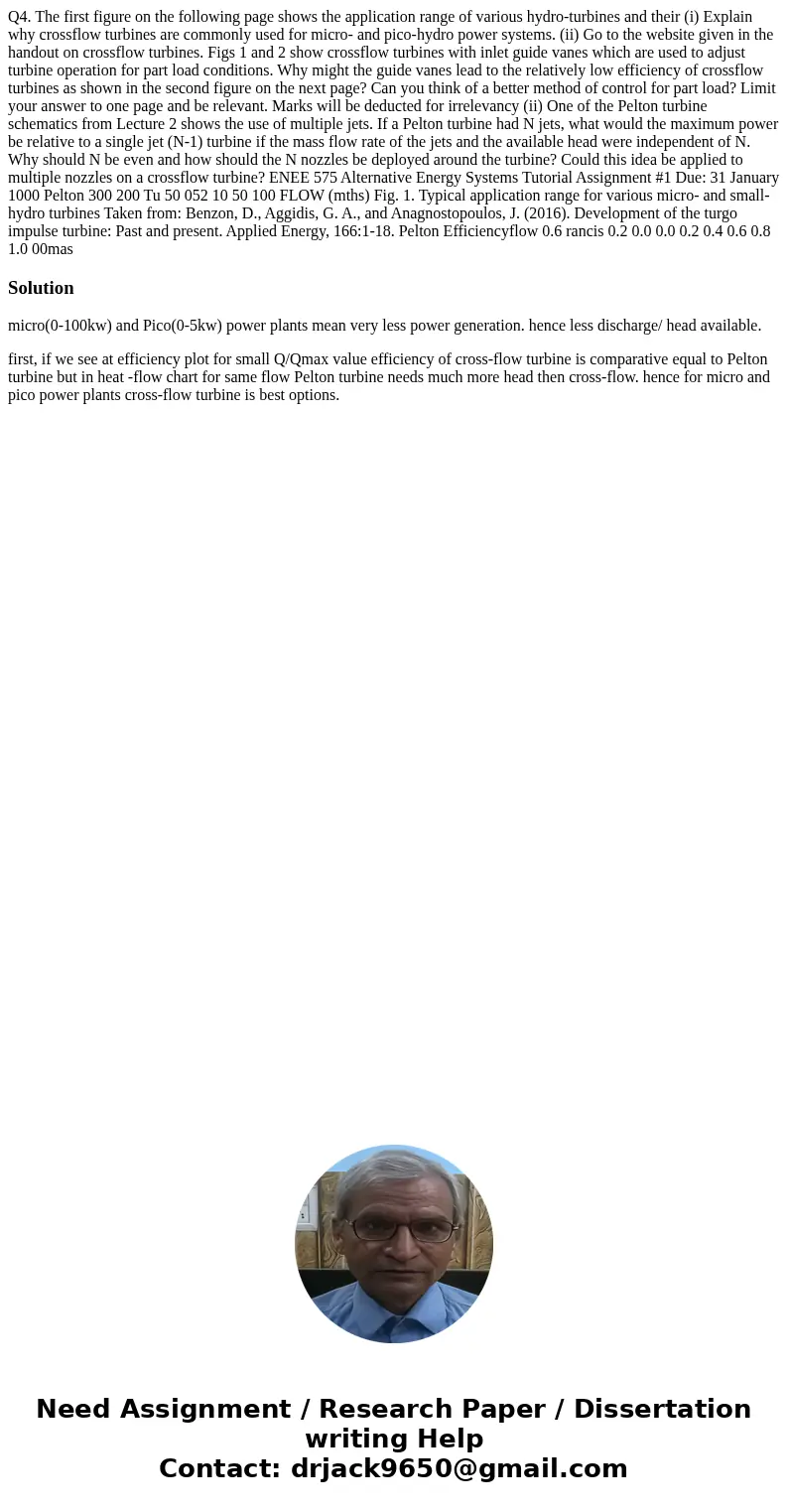Q4 The first figure on the following page shows the applicat
Q4. The first figure on the following page shows the application range of various hydro-turbines and their (i) Explain why crossflow turbines are commonly used for micro- and pico-hydro power systems. (ii) Go to the website given in the handout on crossflow turbines. Figs 1 and 2 show crossflow turbines with inlet guide vanes which are used to adjust turbine operation for part load conditions. Why might the guide vanes lead to the relatively low efficiency of crossflow turbines as shown in the second figure on the next page? Can you think of a better method of control for part load? Limit your answer to one page and be relevant. Marks will be deducted for irrelevancy (ii) One of the Pelton turbine schematics from Lecture 2 shows the use of multiple jets. If a Pelton turbine had N jets, what would the maximum power be relative to a single jet (N-1) turbine if the mass flow rate of the jets and the available head were independent of N. Why should N be even and how should the N nozzles be deployed around the turbine? Could this idea be applied to multiple nozzles on a crossflow turbine? ENEE 575 Alternative Energy Systems Tutorial Assignment #1 Due: 31 January 1000 Pelton 300 200 Tu 50 052 10 50 100 FLOW (mths) Fig. 1. Typical application range for various micro- and small-hydro turbines Taken from: Benzon, D., Aggidis, G. A., and Anagnostopoulos, J. (2016). Development of the turgo impulse turbine: Past and present. Applied Energy, 166:1-18. Pelton Efficiencyflow 0.6 rancis 0.2 0.0 0.0 0.2 0.4 0.6 0.8 1.0 00mas 
Solution
micro(0-100kw) and Pico(0-5kw) power plants mean very less power generation. hence less discharge/ head available.
first, if we see at efficiency plot for small Q/Qmax value efficiency of cross-flow turbine is comparative equal to Pelton turbine but in heat -flow chart for same flow Pelton turbine needs much more head then cross-flow. hence for micro and pico power plants cross-flow turbine is best options.

 Homework Sourse
Homework Sourse